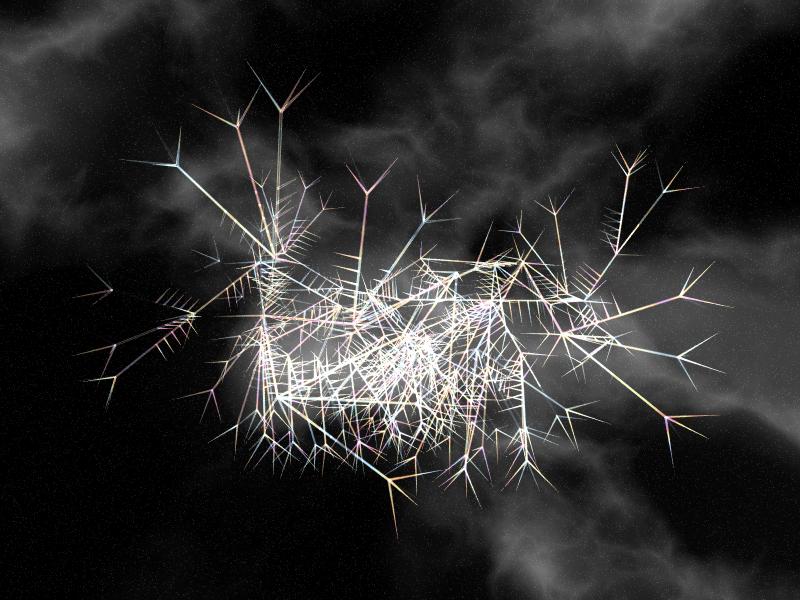

Filigree going "hedgehog" in free space. At irregular intervals the filigree cease moving, extend their limbs in various directions and remain still for up to a week. It has been suggested that this is some form of "sleep" distinct from the other static form, the "umbrella" form where all limbs are bunched together and the entire being becomes a crystaline cylinder. One possibility is that this represents an energy or information gathering form, while the "umbrella" is merely convenient storage.
Note the iridiscent diffraction patterns due to microscopic fibers and films covering the limbs. Most limbs on this filigree are transparent hollow tubes, and can become nearly invisible when the light falls in certain angles (as can be seen to the left). This poses a significant danger when approaching a filigree, since the extremely sharp diamondoid thorns can easily pierce any spacesuit.
This photograph was taken by the 2279 expedition to the moons of Franklin. It was the first conclusive proof that filigrees sometimes venture into free space. The backdrop is the blackish-grey clouds of the equatorial band of Franklin, composed of heavy organic molecules and methane.